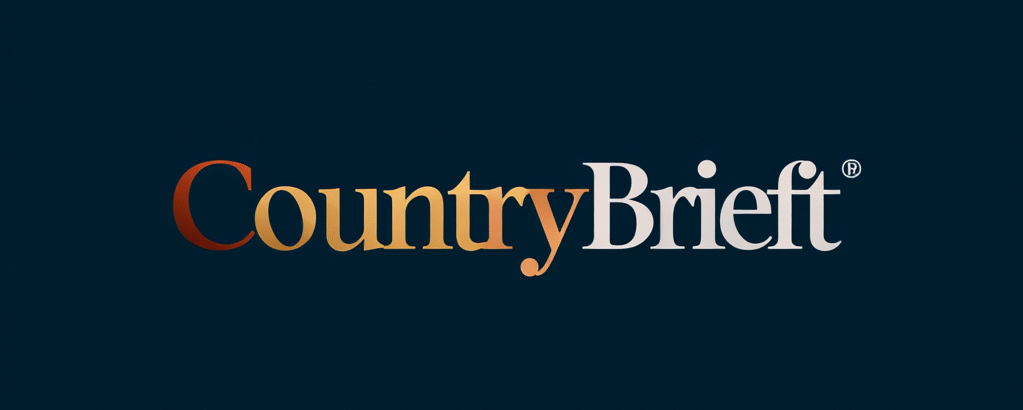Chief Trust Officer: Responsibilities, CISO Connection & Career Path

Hey everyone! So, we’ve all heard about the CISO, right? The Chief Information Security Officer. They’ve been around for a while, keeping our digital doors locked and our data safe. But things are changing, fast. Especially with all this new AI stuff popping up everywhere. It turns out, just being good at stopping hackers isn’t quite enough anymore. Companies are starting to realize that trust is a bigger deal than they thought. It’s not just about not getting hacked; it’s about customers and investors actually believing in you. This is where a new kind of leader is stepping in, and it’s pretty interesting.
Key Takeaways
- The traditional CISO role, focused on defense and compliance, is hitting its limits, especially with the rise of AI. It’s often seen as a cost center rather than a value driver.
- The Chief Trust Officer (CTrO) role is emerging as a new path, shifting focus from just protecting systems to actively building and measuring trust as a business asset.
- A CTrO connects technology trust directly to brand reputation and can drive revenue by making security customer-centric, turning it from an expense into a source of value.
- The CTrO provides tangible ‘trust proofs’ to customers, defends company valuation for investors, and builds credibility with regulators and boards, going beyond simple compliance.
- Moving from CISO to CTrO is seen as a lateral career step, reframing past security experience as credibility and allowing leaders to operate in a more strategic, growth-oriented lane.
The Evolving Landscape of Security Leadership
The world of security leadership has been on a wild ride, hasn’t it? For years, the Chief Information Security Officer (CISO) was the go-to person for keeping digital doors locked and windows shut. Think of them as the ultimate gatekeeper, making sure no digital bad guys got in. But lately, that role feels a bit… cramped. It’s like trying to fit a whole orchestra into a tiny closet. The job has grown so much, and the old ways just aren’t cutting it anymore.
The Structural Limitations of the Traditional CISO Role
Back in the day, when the CISO role first popped up, it was pretty straightforward. Keep the systems safe, pass the audits, and try to avoid any major breaches. Simple enough, right? But as technology exploded and regulations piled up, the CISO’s plate got overloaded. Now, they’re expected to oversee everything from cloud security and app development to physical security and even AI ethics. It’s a lot to juggle, and often, the CISO is left trying to coordinate a bunch of different teams that don’t always talk to each other. This fragmentation can lead to confusion and, frankly, gaps in security that shouldn’t be there.
The Shift from Strategic Importance to Cost Management
Here’s where things get a bit tricky. For a while, security was seen as a strategic must-have. But somewhere along the line, especially after some big financial shake-ups and the rise of compliance rules like SOX, security started getting viewed more like a line item on a budget. Instead of being a driver of innovation or a key part of the business strategy, the CISO often found themselves reporting to the CIO or CFO, tasked with minimizing costs. It’s like asking your top chef to also manage the restaurant’s electricity bill – they’re important, but it shifts their focus away from their core talent.
Accountability Without Authority: The CISO’s Glass Box
This is a tough one. CISOs are often held responsible when things go wrong – and believe me, things do go wrong in the security world. But do they always have the final say in decisions that impact security? Not so much. They can see the risks, they can explain the threats, and they can point out what needs to be done, but the actual decision-making power often rests with others. It’s like being put in a glass box: everyone can see you, they know you’re important, but you can’t always reach out and make the changes you know are needed. This
Introducing the Chief Trust Officer
Okay, so we’ve talked about how the old way of doing things, with the CISO just focused on keeping the bad guys out, isn’t quite cutting it anymore. It’s like trying to build a house with a great security system but a shaky foundation. That’s where this new role, the Chief Trust Officer (CTrO), comes in. It’s not just a fancy title change; it’s a whole new way of thinking about how a company operates and interacts with everyone.
A New Mandate Beyond System Defense
The CTrO’s job goes way beyond just protecting servers and networks. Think of it as moving from just locking the doors to making sure the whole neighborhood feels safe and secure, and actually wants to be there. It’s about building confidence, not just preventing breaches. This means looking at everything from how customer data is handled to how employees feel about the company’s values. The goal is to make trust a core part of the business, not just an IT problem.
Manufacturing Trust as a Capital Asset
Instead of seeing security and privacy as just costs that eat into the budget, the CTrO reframes them as things that actually make the company more valuable. It’s like turning a necessary expense into an investment that pays off. When customers, investors, and partners trust you, they’re more likely to stick around, invest more, and do business with you. This trust becomes a tangible asset, like a strong brand or a great product.
Here’s a way to think about it:
- Customers: They feel more secure sharing their data and are more likely to buy from you if they trust how you operate.
- Investors: They see less risk and more potential for growth, which can lead to better company valuations.
- Employees: They feel more connected to a company that aligns with their values, leading to better morale and retention.
Building trust isn’t just about avoiding bad things; it’s about actively creating positive relationships and a solid reputation that can be a real advantage in the market.
Key Domains of Trust Operations, Quality, and Culture
The CTrO has to juggle a few different areas to make this trust thing work:
- Operations: This involves the day-to-day running of things. How are data privacy policies actually being put into practice? Are security measures working as intended? It’s about making sure the company’s actions match its promises.
- Quality: This is about the standard of trust. Are the company’s products and services reliable? Can customers count on them? It’s about ensuring that the trust built is high-quality and sustainable.
- Culture: This is perhaps the biggest piece. It’s about embedding trust into the company’s DNA. This means training employees, setting clear expectations, and making sure everyone understands why trust matters and how their role contributes to it. It’s about creating an environment where honesty and integrity are the norm.
The Chief Trust Officer as a Strategic Growth Driver

Connecting Technology Trust to Brand Trust
Think about it: in today’s world, customers aren’t just buying a product or service; they’re buying into a company’s reputation. If people don’t trust that you’ll handle their data right, or that your systems are secure, they’re going to look elsewhere. That’s where the Chief Trust Officer (CTrO) comes in. This role bridges the gap between the technical side of security and the overall feeling customers have about your brand. It’s about making sure that the trust built through solid tech practices translates directly into a strong, reliable brand image. This isn’t just about avoiding bad press; it’s about actively building a positive perception that can really move the needle for your business. We’re seeing this play out in how companies approach data privacy and ethical operations.
Driving Revenue Through Customer-Centric Security
For too long, security has been seen as a necessary expense, a cost center. But what if we flipped that script? The CTrO reframes security not as a defensive measure, but as a revenue-generating opportunity. By providing clear, tangible proof of your company’s trustworthiness – like demonstrating AI explainability or validating bias resistance – you can actually speed up sales cycles. Imagine a prospect who’s on the fence. If you can hand them a clear ‘trust artifact’ that shows exactly how you protect their interests, that hesitation can turn into a signed deal. It’s about making security a selling point, not a roadblock.
Here’s how that can look:
- Shorten Sales Cycles: Clear trust proofs can answer prospect questions faster.
- Increase Deal Value: Demonstrating robust security can justify higher pricing.
- Improve Customer Retention: Customers who trust you are more likely to stay.
The shift from seeing security as a cost to viewing trust as a capital asset is a game-changer. It means that every investment in trust is an investment in future revenue and market standing.
Transforming Security from Cost Center to Value Creator
This is the big picture. The CTrO’s job is to take all the complex, technical work that goes into keeping systems safe and turn it into something that directly benefits the bottom line. It’s about moving beyond just meeting compliance checkboxes and instead creating actual market advantages. When investors look at your company, they want to see stability and low risk. When customers look at your brand, they want to feel confident. The CTrO provides the evidence for both. This isn’t just about internal processes anymore; it’s about external perception and measurable business impact. It’s about making trust a product that customers and investors can see and value.
Responsibilities and Value Proposition of a Chief Trust Officer
The Chief Trust Officer (CTrO) role is about more than just keeping systems safe; it’s about actively building and maintaining confidence with everyone connected to the business. Think of it as shifting from just preventing bad things from happening to making sure good things happen because people believe in you. This isn’t just a title change; it’s a whole new way of looking at how security and ethical practices translate into real business wins.
Delivering Trust Artifacts to Customers
Customers today are more aware than ever about how their data is used. They want to know their information is handled with care and respect. The CTrO is responsible for creating tangible proof points that show this commitment. These aren’t just policies tucked away somewhere; they are clear demonstrations of the company’s trustworthiness. Imagine providing a customer with a simple, understandable report showing how their data is protected, or a clear explanation of how an AI system makes decisions without bias. These ‘trust artifacts’ can significantly speed up sales conversations because they directly address customer concerns and build confidence. When a potential client sees concrete evidence of your company’s integrity, they’re much more likely to move forward. It’s about turning abstract promises into concrete assurances.
Providing Valuation Defense for Investors
When investors look at a company, they’re not just looking at the balance sheet. They’re increasingly scrutinizing the company’s ethical standing, data practices, and overall reliability. A CTrO plays a key role in protecting the company’s valuation during these critical moments. During due diligence, having a well-documented portfolio of trust-related proofs can be a powerful defense. It shows investors that the company has proactively managed risks and built a resilient foundation. This can prevent potential discounts on valuation and help maintain market multiples. It’s about demonstrating that trust isn’t just a feel-good concept, but a measurable asset that contributes to financial stability and growth.
Ensuring Credibility with Regulators and Boards
Regulators and board members are tasked with overseeing the company’s operations and ensuring it acts responsibly. The CTrO acts as a bridge, translating complex trust initiatives into clear, actionable information for these groups. This involves not just meeting regulatory requirements, but proactively demonstrating a commitment to ethical conduct and robust governance. By providing clear reports, audit trails, and evidence of strong internal controls, the CTrO builds credibility. This proactive approach helps avoid potential penalties and strengthens the company’s reputation. It means that when regulators or the board ask tough questions, the company has the answers ready, backed by solid proof.
The core idea is to move beyond simply avoiding trouble. It’s about actively creating value by being a company that people, partners, and investors can rely on. This requires a shift in mindset, where trust is seen not as an expense, but as a strategic advantage that drives business success.
The Career Path from CISO to Chief Trust Officer
The journey from Chief Information Security Officer (CISO) to Chief Trust Officer (CTrO) isn’t just a title change; it’s a fundamental shift in focus and responsibility. Many CISOs are already doing much of the work required for a CTrO role, often without the formal recognition. This evolution acknowledges that in today’s business climate, trust is no longer a byproduct of security but a core product in itself. It’s about moving from defending systems to actively manufacturing and delivering trust as a tangible asset.
Recognizing the Natural Progression for CISOs
For years, the CISO role has been evolving. Initially, it was a strategic position, but over time, it often became tied to compliance and cost management. However, as cybersecurity threats grew and customer expectations shifted, CISOs found themselves increasingly involved in customer-facing activities and enterprise resilience. This hands-on experience, particularly in areas like third-party risk and customer interactions, naturally prepares them for the broader scope of a CTrO. The CTrO role represents a lateral move into a new strategic lane, not simply a promotion within the existing one. It’s about reframing security outputs into market-facing trust products.
Reframing Experience as Credibility
Your history as a CISO, with all its challenges and hard-won lessons, becomes a significant asset in the CTrO position. The battles fought to secure systems and navigate complex regulations translate directly into credibility. Instead of just being seen as a defender of internal systems, your experience can be framed as proof of your deep understanding of what it takes to build and maintain confidence. This reframing allows you to articulate the value of security not just in terms of risk avoidance but as a driver of business growth and customer loyalty. It’s about turning past efforts into present-day proofs that resonate with stakeholders.
A Lateral Step into a New Strategic Lane
Think of this transition not as climbing a ladder but as switching to a different, more strategic one. The CTrO role is about operating a product organization focused on trust, rather than managing an internal service. The metrics shift from incident counts to deal velocity, renewal rates, and market differentiation. This means your work directly impacts revenue and valuation. It’s a move from a cost-center mentality to one of capital creation, where trust is the currency. This new lane allows security leaders to finally make their work visible and impactful at the highest levels of the organization, influencing executive decisions and company-wide initiatives.
Practical Application: Trust Proofs Over Compliance
Look, we’ve all been there. You’re trying to close a deal, or maybe get an investor on board, and they start asking about how your AI works, or if your systems are biased. The old way? You’d pull out a binder full of policies, maybe some audit reports, and say, ‘Yep, we’re compliant!’ It felt like checking a box, right? But did it really convince anyone?
Demonstrating AI Explainability to Prospects
Imagine a potential customer is really interested in your AI-powered service, but they’re nervous. They want to know how your AI makes decisions. A traditional CISO might show them the company’s policy on AI explainability and mention that the engineering team does regular checks. It’s not bad, but it’s a bit abstract. The Chief Trust Officer, though, goes a step further. They’d present a tangible ‘proof of explainability.’ This isn’t just a document; it’s a demonstration, maybe even a live walkthrough, showing exactly how the AI’s reasoning can be understood, replicated, and defended. It’s like showing them the engine works, not just telling them it’s built to spec. This kind of concrete evidence can turn a hesitant prospect into a signed contract much faster.
Validating Bias Resistance for Investors
Investors are looking at your company, and they’re worried about potential bias in your AI models. They’ve seen the news, they know the risks. A CISO might point to compliance with industry standards and say, ‘We’ve tested for bias.’ But a Chief Trust Officer understands that investors need more than assurances. They need proof. So, they’d provide a ‘proof of bias resistance.’ This is solid evidence, perhaps from adversarial testing or specific fairness metrics, that shows your AI holds up even when challenged. It’s about demonstrating that your systems are fair and equitable, not just that they meet a minimum standard. This kind of validation can make a real difference in how investors see your company’s long-term stability and ethical standing, potentially protecting your valuation.
Shifting from Service Logic to Product Delivery
This whole shift is about changing how we think about security and trust. Instead of seeing it as a service that just needs to meet compliance rules, we start treating trust itself as a product. Think about it:
- Trust Artifacts: These are the tangible proofs – the explainability demos, the bias resistance reports, the data lineage maps. They are the ‘products’ that customers, investors, and regulators can actually examine.
- Customer Focus: These proofs are designed specifically to address the doubts and questions of the people who matter – the buyers, the auditors, the board members. They are built to remove friction points in the sales or investment process.
- Measurable Outcomes: The goal isn’t just to have compliance; it’s to see the results. This means shorter sales cycles, better investor confidence, and smoother regulatory interactions. It’s about turning trust into a measurable business advantage.
The old way of just showing compliance reports is becoming less and less effective. People want to see actual evidence that things work as promised, especially with complex technologies like AI. It’s about moving from ‘we follow the rules’ to ‘here’s the proof that we’re trustworthy and reliable.’ This makes trust a tangible asset, not just an abstract concept.
It’s a big change, for sure. But it’s the kind of change that makes a real difference in how the business operates and how it’s perceived in the market.
The Chief Trust Officer’s Impact on Business Operations

The Chief Trust Officer (CTO) role is really about making trust a core part of how a business runs, not just an add-on. It’s about making sure that everything the company does, from how it handles customer data to how it treats its employees, builds confidence. This isn’t just about avoiding trouble; it’s about actively creating value.
Addressing Customer Needs and Data Concerns
Customers today are way more aware of their data and how it’s used. They want to know their information is safe and handled ethically. The CTO steps in to make sure the company communicates clearly about its data practices. This means explaining what data is collected, why it’s needed, and how it benefits the customer. It’s about showing them the value exchange when they share their information. When a company approaches data handling with a focus on trust, customers feel more secure and connected to the company’s purpose.
- Clear Communication: Regularly update customers on data policies and security measures.
- Value Proposition: Articulate the benefits customers receive in exchange for their data.
- Ethical Handling: Demonstrate a commitment to responsible and secure data management.
Building trust with customers isn’t a one-time event; it’s an ongoing process that requires consistent effort and transparency. It’s about earning their confidence every single day.
Advocating for Trust-Centric Executive Decisions
Often, security and privacy concerns can get sidelined in executive meetings, especially when they’re seen as just costs. The CTO’s job is to change that perspective. They act as the voice for trust at the highest levels, making sure that decisions consider the impact on customer confidence, employee morale, and investor perception. This means bringing data and clear arguments to the table that show how trust initiatives can actually drive business growth and reduce long-term risks. The CTO helps shift the conversation from ‘how much will this cost?’ to ‘how will this build value and protect our reputation?’
Creating Company-Wide Trust Initiatives
Trust isn’t just the responsibility of one department; it needs to be woven into the fabric of the entire organization. The CTO leads efforts to build a culture of trust that touches everyone. This can involve:
- Employee Training: Developing programs that educate employees on data privacy, ethical conduct, and the importance of trust in their daily work.
- Policy Development: Creating and updating company policies to reflect a strong commitment to trust, fairness, and transparency.
- Cross-Departmental Collaboration: Working with teams like marketing, legal, HR, and product development to ensure trust principles are integrated into all business functions.
By making trust a company-wide priority, businesses can improve employee retention, attract top talent, and build stronger, more resilient relationships with all stakeholders.
The Road Ahead: Trust as the New North Star
So, what’s the takeaway from all this? It’s pretty clear that the old way of doing things, especially for security leaders, just isn’t cutting it anymore. With AI changing the game so fast, just ticking boxes for compliance isn’t enough. The Chief Trust Officer role isn’t just a fancy new title; it’s a whole new way of thinking about how we build and keep trust. It’s about moving from just protecting systems to actively creating value that customers and investors can see. For those coming from a CISO background, this isn’t about climbing a ladder, but maybe switching to a different one altogether. It’s a chance to make security and trust a real driver of business growth, not just a cost center. The future looks like it’s all about trust, and the Chief Trust Officer is the one who will be leading the charge.
Frequently Asked Questions
What is a Chief Trust Officer (CTrO)?
A Chief Trust Officer is a leader who focuses on building and maintaining trust between a company and its customers, employees, and partners. They make sure that things like data privacy, security, and ethical practices are strong and reliable. It’s like being the main person responsible for making sure everyone believes and feels safe with the company.
How is a CTrO different from a CISO?
Think of a CISO (Chief Information Security Officer) as the protector of computer systems, focused on stopping cyberattacks and following rules. A CTrO goes beyond that. They focus on actively creating trust as a valuable part of the business, not just preventing bad things. It’s about showing how trustworthy the company is, not just keeping systems safe.
Why is the CTrO role becoming more important now?
With new technologies like AI and more online activity, people are more worried about their data and how companies operate. Companies need someone to make sure they are seen as trustworthy. This role helps businesses grow by making customers and investors feel more confident.
Can a CISO become a CTrO?
Yes, absolutely! Many CISOs already do some of the work a CTrO does. It’s seen as a natural next step for CISOs who want to focus more on the business value of trust and help the company grow, rather than just managing security risks.
What kind of things does a CTrO do?
A CTrO works on making ‘trust proofs’ that show customers and investors the company is reliable. They might show how AI is fair and understandable, or how data is protected. They also help make trust a part of the company’s culture, so everyone thinks about it.
Does having a CTrO really help a business make more money?
Yes, it can! When customers and investors trust a company more, they are more likely to buy from them, invest in them, and stick with them. By proving their trustworthiness, companies can sell products faster, get better deals, and avoid problems that could cost them money.






